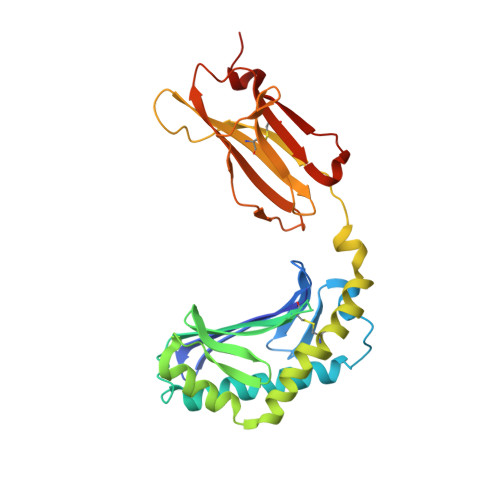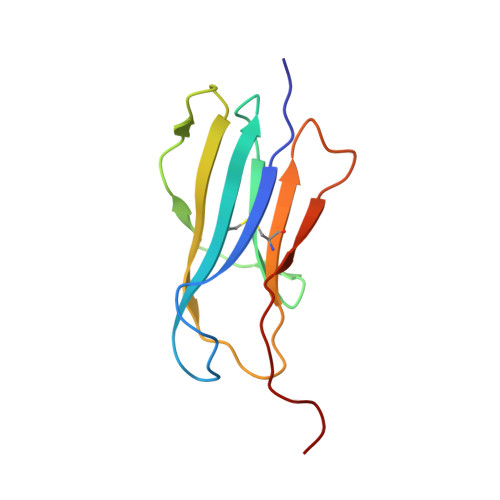Human T cell response to CD1a and contact dermatitis allergens in botanical extracts and commercial skin care products.
Nicolai, S., Wegrecki, M., Cheng, T.Y., Bourgeois, E.A., Cotton, R.N., Mayfield, J.A., Monnot, G.C., Le Nours, J., Van Rhijn, I., Rossjohn, J., Moody, D.B., de Jong, A.(2020) Sci Immunol 5
- PubMed: 31901073
- DOI: https://doi.org/10.1126/sciimmunol.aax5430
- Primary Citation of Related Structures:
6NUX - PubMed Abstract:
During industrialization, humans have been exposed to increasing numbers of foreign chemicals. Failure of the immune system to tolerate drugs, cosmetics, and other skin products causes allergic contact dermatitis, a T cell-mediated disease with rising prevalence. Models of αβ T cell response emphasize T cell receptor (TCR) contact with peptide-MHC complexes, but this model cannot readily explain activation by most contact dermatitis allergens, which are nonpeptidic molecules. We tested whether CD1a, an abundant MHC I-like protein in human skin, mediates contact allergen recognition. Using CD1a-autoreactive human αβ T cell clones to screen clinically important allergens present in skin patch testing kits, we identified responses to balsam of Peru, a tree oil widely used in cosmetics and toothpaste. Additional purification identified benzyl benzoate and benzyl cinnamate as antigenic compounds within balsam of Peru. Screening of structurally related compounds revealed additional stimulants of CD1a-restricted T cells, including farnesol and coenzyme Q2. Certain general chemical features controlled response: small size, extreme hydrophobicity, and chemical constraint from rings and unsaturations. Unlike lipid antigens that protrude to form epitopes and contact TCRs, the small size of farnesol allows sequestration deeply within CD1a, where it displaces self-lipids and unmasks the CD1a surface. These studies identify molecular connections between CD1a and hypersensitivity to consumer products, defining a mechanism that could plausibly explain the many known T cell responses to oily substances.
Organizational Affiliation:
Division of Rheumatology, Immunology and Allergy, Brigham and Women's Hospital, Harvard Medical School, Boston, MA 02115, USA.

















